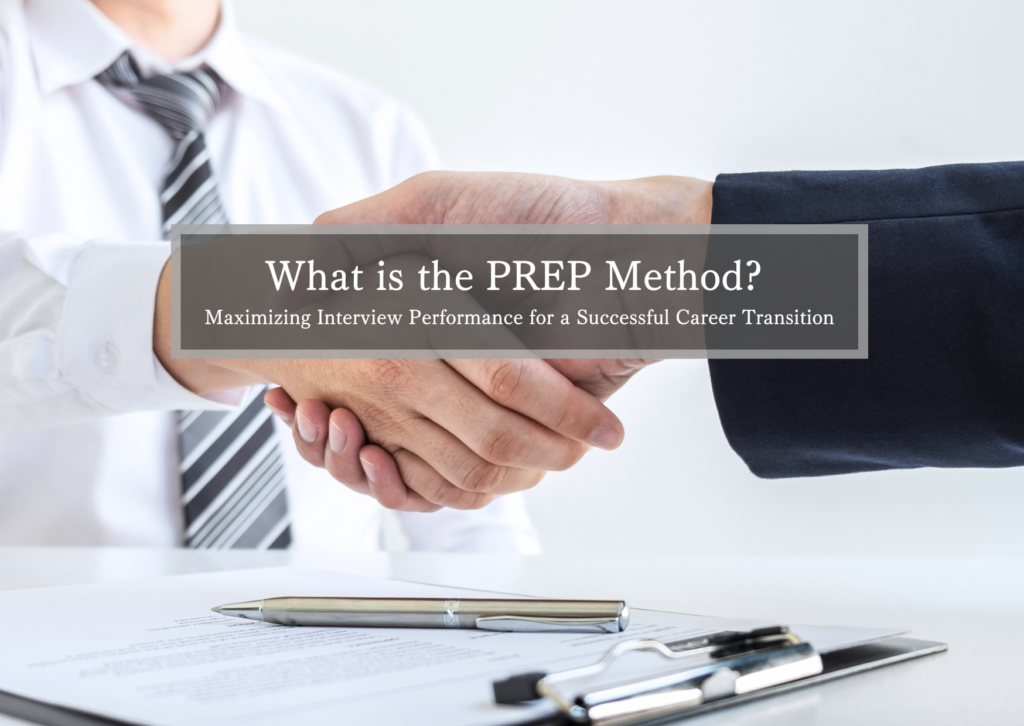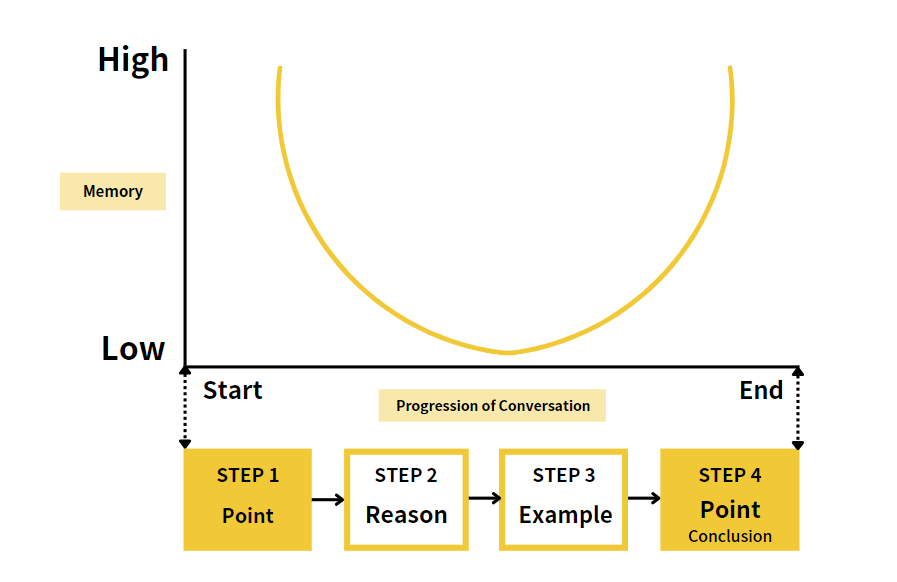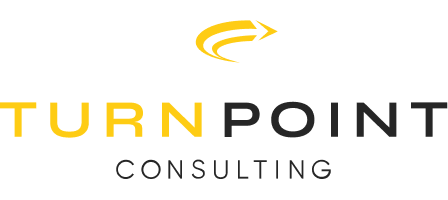06 Dec What is the PREP Method? Maximizing Interview Performance for a Successful Career Transition

In job interviews, clearly and effectively expressing oneself is a challenge faced by all job seekers. The PREP method, as a framework for communication, is concise and powerful, helping to organize thoughts and clearly convey one’s ideas and values in interviews. It’s essential to prepare this method in advance for interviews.
1. What is the PREP Method?
PREP (Point, Reason, Example, Point) is a structured method of expression that starts with a conclusion, explains reasons based on data, strengthens the impression with appropriate examples, and ends by reiterating the main point.
The PREP method includes the following four steps:
-
- Point: Start by stating your main idea or argument clearly.
- Reason: Give reasons to support your main point, using data or logical reasoning.
- Example: Provide a concrete example or anecdote that illustrates your reason and reinforces your point.
- Point: Conclude by restating your main point to ensure it is understood and remembered.
♦ The Upside of Using PREP in Interviews
The PREP method really shines during interviews. It taps into the way our attention works best—strong at the beginning and end but a bit fuzzy in the middle. So, by kicking off with your main idea and circling back to it at the end, you make sure what you’re saying sticks with your interviewer.
When you’ve only got an hour or so to make your mark, being clear and to the point with each answer is key. You could have a rockstar resume, but if you wander off-topic or take too long to make your point, it might not leave the best impression. Using the PREP method helps you keep your answers tight and impactful, so you can leave the interview knowing you’ve made a solid impression.
注意力曲線

♦ Examples of Using the PREP Method
Not only is the PREP method beneficial in interview scenarios, but it also has wide-ranging applications in various business contexts. Our daily tasks often involve creating reports, confirming details, and posing questions. By consciously applying the PREP method, we can hone our ability to communicate in a concise, impactful manner.
Let’s actively integrate the PREP method into our day-to-day business interactions for enhanced effectiveness.
Below is an example illustrating how the PREP method can be utilized in routine business communication.
Communication Without Using the PREP Method
You: There’s an urgent request for a specification change from a client, and we might not meet the deadline without requesting SE support from an external vendor.
Boss: Oh, I see. So, what do you need?
You: Our team’s developers will be on leave for two days next week, so I’ll check how much work is needed to complete the project.
Boss: (What was the point of this conversation..?)
Communication Using the PREP Method
You (Point): We’ve received a request for a specification change from a client, and I’d like to request additional support for two SEs from a vendor. Is there still room in the budget for this?
You (Reason): Due to the specification change, our team’s developers will be absent for two days next week, which could affect the progress of the project. If we can get external SE support, we can minimize the delay in the schedule.
You (Example): In a similar situation in our last project, we managed to smoothly progress and received positive feedback from the client by getting external support.
You (Point) : Therefore, if we can secure additional support for two SEs within the budget, I believe it can significantly contribute to the success of the project. Could you please consider this?
2. The Upside of Using PREP in Interviews
Using the PREP method helps you keep your answers tight and impactful, so you can leave the interview knowing you’ve made a solid impression.
♦ Self-Promotion
According to the human resource management theory that “past behavior is the best predictor of future behavior.” This is why resumes and work history are emphasized as critical elements in the selection process.
During the interviews, you often encounter questions like, “Why do you think you are suitable for this job?” In this case, it’s necessary to use the PREP method to link the objective experiences in your resume with your abilities, experiences, and potential.
Conclusion: “I’m convinced that I’m a great fit for the Product Manager role.
Reason: “As someone with a background in science, I am highly sensitive to logic, experience, and data, and have five years of experience in data analysis and market research. These skills enable me to plan and strategize for the success of a product.”
Example: “In my previous job, I accurately analyzed market demand for a new product, understood the strengths and weaknesses of competing products, and as a result, launched a campaign that maximized the product’s features, increasing sales by 30% compared to the previous year… (cite specific experiences here).”
Conclusion: “Therefore, I believe my logical thinking, sensitivity to experience, and insight into data can be leveraged in the role of Product Manager at your company. I am confident that I can contribute to the growth of the product through my experience in strategizing and leading to success across the entire product lifecycle.”
By being mindful of the PREP method, you can not only demonstrate your professional abilities concretely but also strengthen the persuasiveness of your views using actual experiences.
♦ Additional Interview Examples Using the PREP Method
Below are additional examples specifically tailored for use in interviews.
“What do you think are your strengths?“
- Conclusion: “My key strength is my adaptability to change.”
- Reason: “In the fast-evolving digital landscape, being able to quickly adapt and update one’s skills is crucial in any organization. I excel at rapidly assimilating new information and skills, which I continuously work to improve.”
- Example: “During a recent digital transformation project, there was an urgent need for operational efficiency and cost reduction. I swiftly upskilled through online resources and webinars, gaining extensive knowledge in digital transformation. By disseminating this knowledge and integrating external insights, I played a pivotal role in enhancing the project’s performance.”
- Conclusion: “This ability to learn and adapt swiftly ensures that I can effectively navigate and contribute to success in a constantly changing environment.”
“How do you think disagreements or conflicts with team members or stakeholders should be handled?”
- Conclusion: “In cases of disagreements or conflicts, it’s vital to engage in calm discussions, respect differing opinions, and strive for solutions that meet common objectives.”
- Reason: “Conflicts can negatively impact teamwork, productivity, and relationships. It’s essential to find mutually respectful solutions that align with shared goals.”
- Example: “For example, if there’s a conflict between sales and development departments regarding new product policies, it’s important to balance both departments’ perspectives while considering the product’s profitability.”
- Conclusion: “Therefore, managing disagreements or conflicts involves calm, emotion-free discussions, respecting all viewpoints, and finding solutions that serve common interests. This approach is key to effective conflict resolution.”
These examples not only showcase your strengths and conflict resolution skills but also demonstrate your adeptness in communication and problem-solving. Mastering the PREP method allows you to present structured and convincing responses, significantly enhancing your interview performance.
In final interviews, the emphasis is typically on assessing the candidate’s cultural fit, career vision, communication skills, and potential for the role. It’s crucial for candidates to highlight these aspects and prepare to align with the interviewer’s expectations.
3. Characteristics and Application Scenarios of the PREP and STAR Methods
While the PREP method is a popular tool for interview preparation, other methods like the Whole-Part method and the STAR method are also valuable. Let’s delve into the characteristics and application scenarios of both the PREP and STAR methods.
♦ Suitable Interview Questions for the PREP Method
The PREP method is ideal for questions that require you to express personal opinions or arguments.
It’s particularly effective for:
- Opinion Questions: For queries like “What is your opinion on electric cars?” where a personal viewpoint is sought.
- Predictive Questions: Such as “What are your views on the development of this industry over the next five years?” where future predictions are expected.
- Questions on Personal Values: When asked about what you value, for example, “What do you think is the most important element of leadership?”
- Career-Related Questions: Like “Please tell me about your career vision for the next five years.”
Using the PREP method here involves stating your viewpoint (Point), providing reasoning (Reason), offering specific examples (Example), and then reiterating your viewpoint (Point).
♦ Suitable Interview Questions for the STAR Method
Conversely, the STAR method is more suitable for specific behavioral interview questions, especially those asking candidates to share past experiences and behaviors. Examples include:
- Problem-Solving Experience: “Please describe how you solved a difficult problem at work.”
- Teamwork Experience: “Give an example of when you faced a challenge in a team project and how you overcame it.”
- Leadership Experience: “Tell me about a time when you led a team to achieve a goal.”
- Dealing with Pressure: Such as, “How do you usually handle pressure at work?”
For these types of questions, describing the Situation and Task, detailing the Actions taken, and then showcasing the Results (STAR) is very effective.
The examples above are guidelines and don’t have to be strictly adhered to for either the PREP or STAR methods. When answering questions based on past experiences, it’s important to explain specific situations in a relatable manner. For opinion-based questions, responses should align with the nature of the query. In practice, you can also combine both methods, using the PREP approach to articulate your viewpoint and reasons, followed by the STAR method to provide concrete examples supporting your stance. This combination can be particularly effective for complex questions requiring both a viewpoint and practical experience to support it.
4. Conclusion
The Value of the PREP Method in Interviews
Throughout this discussion, we have delved into the effective use of the PREP method in interview settings.
The PREP method stands out as a crucial tool in scenarios like interviews where clear, concise, and impactful communication is essential within a limited timeframe. This technique not only facilitates the expression of your thoughts in a coherent and logical manner but also showcases your analytical and communication skills. It’s beneficial to practice the PREP method in everyday interactions, enhancing your ability to adeptly navigate various situations. By incorporating the PREP method into your interview strategy, you can approach every question with calmness and precision, making a memorable impression on the interviewer.



